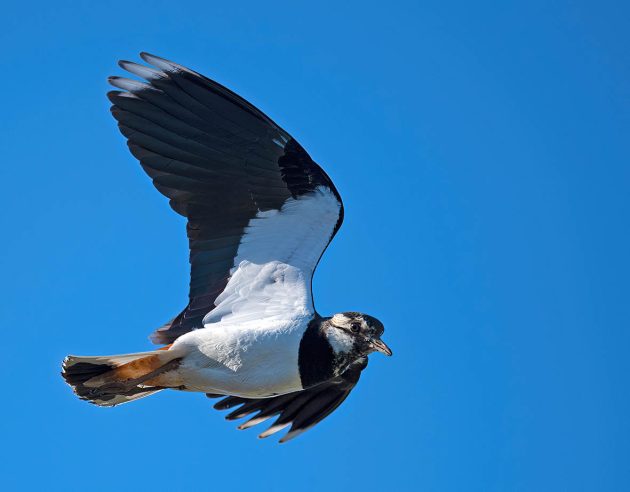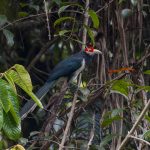
For me, the Christmas/New Year break is a very particular time of the year. It provides me with a peculiar and unusual mix of birds and it brings back memories of times past when the picture was different in some ways. Living at the southernmost region of Europe, actually further south than parts of North Africa, means that it is here that we find the early evidence of the onset of “spring”. In fact, from this weekend onwards the days will start to get longer and we soon get a response from birds.
I decided to list my top ten favourite species at this time of the year, those that I most often associate with this period and which give me fond memories of decades of looking out for them. Because of the geographical location, two of the three categories into which I have grouped my top ten, represent differing climatic conditions and responses to these. One represents the response of birds to cold winter snaps, here or further north, while the other, paradoxically, represents the “spring” arrival of birds from the south. Both can coincide, such is the climatic gradient provided by the range of altitude, from sea level to over 3,000 metres, in this part of the world. My third group is seabirds.

Let’s start with those showing a response to cold winter conditions. Top of my list in this category, and overall in my top ten, is the Lapwing (Vanellus vanellus). The Spanish name “Avefria” says it all – the bird of the cold. Seeing huge flocks of Lapwings flying past along the coast, crossing into Morocco, is a memory that I shall never forget. One winter an estimated quarter-of-a-million Lapwings descended on Cadiz Province alone! This doesn’t happen anymore. The winters are milder and the European population of Lapwing has declined enormously. I still see flocks here and there but nothing compared to what it once was.

My second “cold” bird is the Alpine Accentor (Prunella collaris). During cold snaps, especially when the mountains are covered in snow, these lovely birds descend right down to the coast. Looking for Alpine Accentors on the Rock of Gibraltar, where I live, was a Christmas break assignment since my school days.

The third candidate is the Chiffchaff (Phylloscopus collybita). This small warbler arrives in October but, what makes it special for me is its habit of attending stands of introduced aloes. Here, as temperatures drop and insects become scarce, the Chiffchaffs become temporary hummingbirds, hovering to extract the nectar from the flowering aloes which originated from South Africa. It is a novel behaviour which I spent time recording and describing as a student back in the seventies.

The flip side of the coin is provided by three birds which are already arriving from tropical Africa and whose numbers will augment in the weeks to come. The Swallow (Hirundo rustica) arrives now and settles in its breeding sites on the lowlands. Daytime temperatures here are high enough to generate insect activity, especially in the marshlands where water provides breeding grounds for mosquitoes and other insects. This year, a wet one at last, promises to be good for them.

Second is the Great Spotted Cuckoo (Clamator glandarius) which exploits the emergence of caterpillars, using the area as stop-over before continuing north. An early arrival ensures they are ready to parasitise magpies and other corvids, which start breeding activities early in the year.

The third is the White Stork (Ciconia ciconia). Many White Storks don’t leave us at all nowadays but the arrival of large flocks of these birds from Africa at this time of the year is one of the special moments in the ornithological calendar.

My third group is the seabirds. Northern Gannets (Morus bassanus) and Sandwich Terns (Thalasseus sandvicensis) patrol the coastline in search of fish, often in large numbers after gales. Spending time on the cliffs of Gibraltar watching these birds, which come remarkably close, is another seasonal ornithological pastime.




Some years we get influxes of Razorbills (Alco torda). These birds are very confiding and will venture into the sheltered harbour areas where you can see them at close quarters.

My last species is, like the Lapwing, one which has declined significantly, at least as a wintering seabird off our coasts. I’m referring to Little Gull (Hydrocoloeus minutus). Each winter I would go to Europa Point during easterly gales and I could see flocks of over two hundred Little Gulls offshore. Now there are none.

I wonder how many readers have their own favourite seasonal bird species. It would be fun to compare notes! Wishing you all the best during the season’s festivities and for the new year.














There weren’t breeding geese in the Netherlands when I was young and the wintering birds would be the Christmas special. Now there are millions. It’s also a Christmas bird in Portugal (Greylag Goose mainly).
Fascinating stuff as usual, Clive. It will be nearly four months before we see our swallows back here in the UK in any numbers. I love the story of chiffchaffs becoming temporary hummingbirds.
An enjoyable read with wonderful images. For me here in New Zealand, it’s the September arrival of shining cuckoo from their wintering grounds in the Bismarck Archipelago (New Guinea) and Solomon Islands. Also, the arrival of bar-tailed godwit in their single non-stop flight from their breeding grounds in Alaska, arriving also in September.